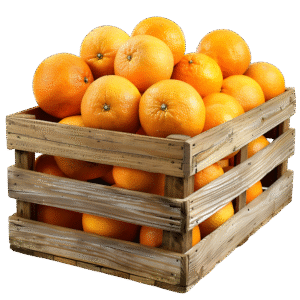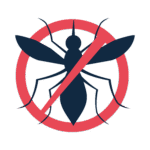Common Pests Affecting Indoor Plants in Nepal:
In Nepal, indoor plant pests are influenced by seasonal and environmental conditions. Aphids, tiny sap-sucking insects, thrive during the warm, humid months of June to August and are commonly found in new growth, particularly in poorly ventilated urban areas like Kathmandu. Spider mites, microscopic pests, prefer dry, dusty conditions and are most prevalent during the winter months of December to February, especially in the Terai region and Kathmandu Valley. Mealybugs, characterized by their white, cottony appearance, often hide in leaf joints and have become a growing concern for succulent collectors in urban homes. Fungus gnats, small flies that buzz around overwatered pots, are a frequent nuisance during the monsoon season, particularly in lowland areas like Chitwan and Lumbini. These pests highlight the importance of tailored pest management strategies based on local climatic and environmental factors.
Symptoms: Yellowing leaves, sticky “honeydew” residue, stunted growth, or fine webs.
When pests attack your indoor plants, it is easy to use chemical pesticides. However, organic pest control is a better choice. It’s safer, more sustainable, and often cheaper. Chemical pesticides can be harmful, especially in urban areas like Kathmandu where air quality is poor. They leave toxic residues that can be bad for health, especially in homes with limited ventilation. Organic methods, like using neem or soap, are safer because they break down quickly and don’t leave harmful residues. This is important for families with children or pets who might touch or eat plants.
Organic solutions are also affordable because they use ingredients you might already have at home. Unlike chemical pesticides, organic methods don’t lead to pest resistance, making them a reliable long-term solution.
- Use of neem products: Neem oil and neem leaf extracts are powerful natural pesticides that repel and disrupt the life cycles of pests. Neem oil, derived from the seeds of the neem tree, contains compounds like azadirachtin, which inhibit pest growth and reproduction by disrupting their hormonal systems. This makes neem oil effective against many pests, including aphids, whiteflies, and spider mites. To use neem oil, mix 1 standard tablespoon with 1 liter of water and add a few drops of mild soap as an emulsifier. Alternatively, you can boil neem leaves in water, let them cool, and use the solution as a spray. Neem trees are widely available in Nepal, particularly in the Terai region, and neem products are commonly sold in local markets like Kathmandu and Pokhara. This accessibility makes neem-based solutions convenient and eco-friendly for pest control in Nepalese gardens.
- Use of sticky traps
- Sticky traps consist of a colored surface, often yellow or blue, coated with a strong adhesive. They attract and capture insects upon contact, making them effective for monitoring pest populations and identifying infestations early.
- Chilly and Garlic solution spray
- Garlic and chili solutions are natural, non-toxic pesticides effective against aphids, whiteflies, spider mites, and other pests. To prepare, crush 8-10 garlic cloves and 1 cup of chili peppers, boil them in 1.5 liters of water, simmer for 10 minutes, then strain and dilute the concentrate with water (1:2 ratio). Add a tablespoon of soap or vinegar for better adhesion. Spray the solution on infested plants once or twice a week, avoiding peak sunlight. While cost-effective and eco-friendly, it requires frequent reapplication due to its short residual action. Regular use can deter pests and promote healthy plant growth.
- Essential Oils
- Add 2-3 drops of essential oils (e.g., lemon, orange, lavender, tea tree, mint, cedar, pine) to 100 ml of water. Spray the mixture on plants to repel pests and diseases.
- Proper soil composition and timely repotting
- Proper soil composition and timely repotting are essential for managing pests in indoor plants. Healthy soil with adequate organic matter and good drainage reduces the risk of pests like fungus gnats by preventing water stagnation and root rot, while also fostering beneficial microbes that protect against infections. Repotting removes old, potentially infested soil and replaces it with fresh, sterile soil, eliminating pests like larvae or eggs. However, repotting should be done cautiously, ideally in spring, to minimize plant stress and allow for strong recovery during the growing season. Together, these practices create a healthier environment that discourages pests and supports plant vitality.
Did you know?
- Aphids can reproduce without mating! A single aphid can produce up to 80 offspring in just a week, leading to rapid infestations.
- Scale insects are masters of disguise. They attach themselves to plants and form a hard, protective shell, making them look like harmless bumps on leaves or stems.
- Neem oil has been used for centuries in traditional medicine and pest control. It’s so effective that it’s often called the “wonder oil” of the plant world.
- Sticky traps are color-coded for a reason! Yellow traps attract pests like whiteflies and fungus gnats, while blue traps are more effective for thrips.
- Garlic and chili sprays not only repel pests but also act as natural fungicides, protecting your plants from fungal infections.
- Essential oils like peppermint and eucalyptus not only deter pests but also leave your plants smelling fresh and fragrant.
- Fungus gnats are attracted to damp soil, so overwatering your plants is like rolling out the red carpet for these unwelcome guests.
Need Expert Help? We’ve Got You Covered!
While DIY pest control can be effective, sometimes pests can be stubborn or overwhelming. If you’re dealing with a persistent infestation or simply want to ensure your indoor plants stay healthy and pest-free, don’t hesitate to reach out to the pros! Our team of plant care experts is here to help you tackle any pest problem with tailored solutions and expert advice.
📞 Give us a call today or reach out to us—we’re ready to help your plants thrive and keep your home green and pest-free!




